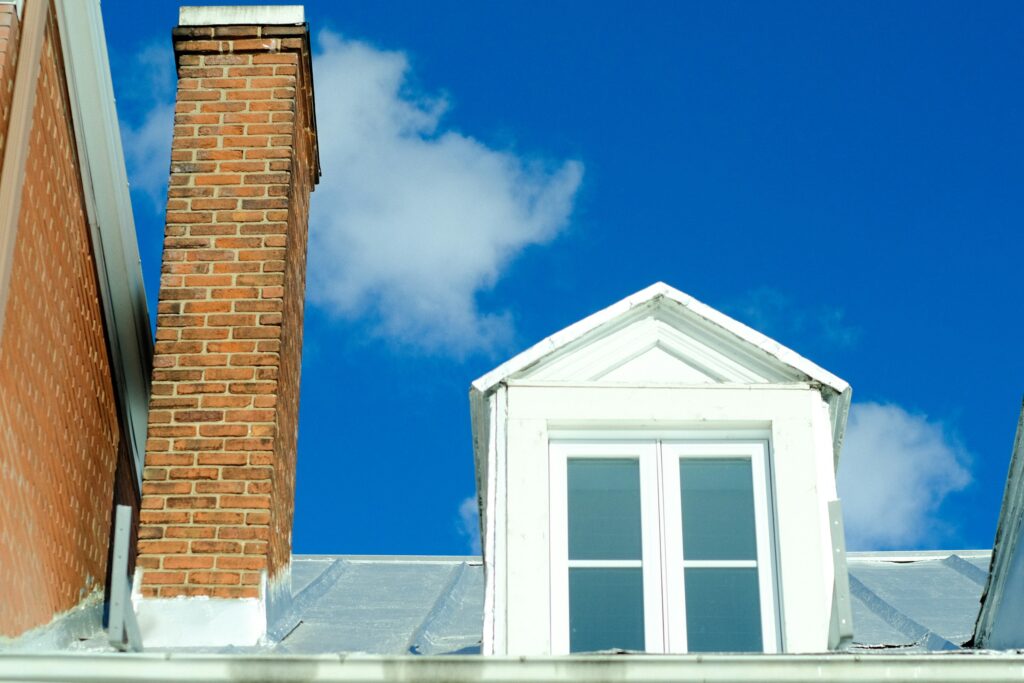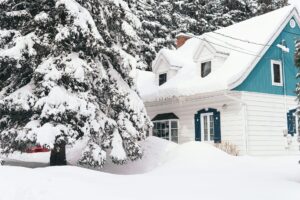Replacing or installing new windows can be a significant investment. It’s no surprise that homeowners often jump at discount offers or “best deal in town” promotions, hoping to lower the cost of their renovation. But as with any home-improvement project, that initial savings can quickly vanish when cheap, poorly made windows lead to higher energy bills, frequent repairs, or even structural damage. How can you tell a genuine bargain from a future money pit? Below, let’s explore why the lowest price tag doesn’t always equal the best value—and what homeowners should consider when upgrading their windows.
Hidden Long-Term Costs
While the sales pitch on discounted windows can be enticing—“Save 20% when you buy today!”—the reality is that bargain-basement prices often reflect lower-quality materials or a lack of advanced features. Here’s where you might pay more later:
Frequent Repairs and Replacements
- Poor-Quality Frames: Vinyl windows are popular for their affordability, but there’s a difference between sturdy vinyl that holds up to sunlight and temperature swings, and cheaper vinyl formulations that crack or yellow over time. Replacing your windows prematurely because frames fail can quickly eliminate any of your initial “savings.”
- Weak Hardware: From locks to hinges, cost-cutting on hardware often means these parts fail sooner, leading to drafts or security concerns. Even if the frames are still in good shape, you might have to replace locks or latches more often.
Increased Energy Bills
- Poor Insulation: Cheap windows often come with single-pane glass or minimal insulating gas fills (like argon or krypton), allowing heat to escape in winter and enter in summer. Your heating and cooling systems have to work harder, which shows up on your monthly bills.
- Drafts and Air Leaks: Bargain models can sometimes have subpar weatherstripping or ill-fitting sashes, leading to gaps that let in outdoor air. That translates to higher costs for maintaining a comfortable indoor temperature.
According to the U.S. Department of Energy, inefficient windows can account for 25%–30% of residential heating and cooling use. Over time, those extra utility costs can dwarf the savings you initially see on the sticker price.
Common Signs of Inferior Materials
For a homeowner new to window-shopping, it can be difficult to identify which products are top-notch vs. which are on the cheaper side. Here are some red flags to watch out for when evaluating the construction and finish of a window:
Flimsy Frames or Sashes
- Lightweight Feel: Pick up the window sample, if possible. If it’s surprisingly light, it may lack the structural heft needed to withstand day-to-day use—especially in areas with big temperature swings or strong winds.
- Visibly Thin Material: Frames that flex easily in your hands likely won’t hold up under consistent opening and closing.
Rough Edges or Joints
- Poor Welds: For vinyl windows, the corners should be cleanly welded. Any obvious gaps or irregular seams might indicate a rushed manufacturing process.
- Rough Edges on Wood Frames: Inferior wood frames might have splinters or poorly sanded surfaces. Over time, these flaws can also promote moisture infiltration and rot.
Minimal Weatherstripping
- Check Seal Quality: Windows need effective weatherstripping around the sash perimeter for an airtight seal. Thin or poorly adhered strips are prone to tearing, letting in air and water.
- Inadequate Layers: Quality windows often include multiple layers of weatherstripping—sometimes neoprene or foam—to provide multiple “lines of defense” against the elements.
If you’re working with a contractor, ask them to walk you through the sample window—a reputable professional will gladly point out quality indicators and explain how the window is manufactured.
Lack of Key Features
Windows aren’t all made the same. There are a number of innovations in today’s market that significantly improve efficiency, durability, and comfort but may be absent in steeply discounted options.
Low-E Coatings
- More Than a Marketing Term: A Low-E (low-emissivity) coating reduces the amount of ultraviolet and infrared light that passes through glass without compromising on visible light.
- Energy Efficiency: This helps homes stay cooler in the summer and warmer in the winter, cutting down on cooling and heating expenses.
- Fade Protection: Reduced UV helps preserve furniture, flooring, and artwork from fading over time.
Multiple Panes and Gas Fills
- Double or Triple Glazing: While single-pane windows remain cheaper, they’re far less effective at insulating. Double-pane windows with a sealed air (or gas) space can cut down on energy transfer dramatically.
- Argon or Krypton Gas: These inert gases enhance insulation more effectively than just air alone within window panes. High-quality windows often incorporate these fills, while lower-end windows may omit them or include cheaper gas that leaks over time.
Secure, Durable Hardware
- Sturdy Locks and Cranks: If you’re opting for casement or awning windows, the crank should look and feel solid. For double-hung windows, test the sash locks to see if they latch firmly.
- Tilt-In Features: Modern windows often have tilt-in sashes to make cleaning easier. Bargain windows might omit this convenience, or have tilt mechanisms that break easily.
Potential Structural and Water Damage
Beyond just higher bills or frequent fixes, low-end windows can lead to deeper issues like moisture penetration, mold growth, or wall damage. Here’s how:
Subpar Weatherproofing
In addition to air leaks, cheap windows may allow moisture to seep around the frames or through the sashes. Over time, that moisture can damage wall surfaces, insulation, or even the home’s structural supports. If mold sets in, remediation costs can be substantial, outweighing the initial savings by a large margin.
Improper Installation
Cheap windows can sometimes be paired with subpar installation services—particularly if the installer tries to cut corners to meet a rock-bottom price quote. Improper flashing or sealing can create water-entry points. Air infiltration, warping frames, and compromised insulation further increase your risk of expensive repairs down the road.
Voiding Your Home’s Warranty
In some cases, continuous water intrusion can damage floors, walls, or other structural elements. If the window brand or your home’s builder has a warranty for these areas, it might be voided if the cause is traced to either inferior windows or faulty installation. That leaves you fully responsible for repair costs.
Warranty Shortfalls
One benefit of investing in a higher-grade window is the accompanying warranty coverage—often 10, 15, or 20 years, sometimes even lifetime coverage for specific parts. On the other hand, windows sold at deeply discounted prices might come with minimal or poorly defined warranties. This means:
- You might not be covered if the glass fails or develops condensation between panes.
- Certain parts—like locks or hardware—might only be covered for a brief period.
- Transferring the warranty to a future homeowner can be cumbersome or impossible, potentially impacting your home’s resale value.
Before committing to a particular brand or model, carefully read the warranty’s fine print. If coverage is vague or significantly shorter than industry norms, it’s a red flag. You want your purchase protected in case of factory defects or material failures.
Resale Implications
Windows play a significant role in a home’s curb appeal and overall marketability. They’re often among the first features prospective buyers notice—and they can tell if they’re older or of questionable quality.
Curb Appeal and First Impressions
- Cheap windows can fog up faster or look worn out after only a few years. Hazy or scratched glass is especially noticeable from the outside, detracting from your home’s appearance.
- Mismatched styling or finishes can clash with the home’s overall aesthetic, making it tough to create a cohesive, high-quality look.
Home Value and Inspections
- Energy bills rank high on a buyer’s list of concerns. When a home has inefficient or poorly sealed windows, utility bills may spike, diminishing buyer excitement.
- A buyer’s home inspector will likely note subpar windows or prior water intrusion in their report. This can lead to lower offers or requests for seller concessions to fix or replace them before closing.
While potential buyers may not expect top-of-the-line upgrades in every home, windows are a highly visible element. A well-known, reputable brand with a transferrable warranty often signals better overall maintenance and care.
How to Spot Genuine Value
When shopping for windows, it’s essential to balance cost considerations with quality. Here’s what to keep in mind:
Compare Performance Ratings
- Look for the National Fenestration Rating Council (NFRC) label on windows, which rates U-factor (insulation), Solar Heat Gain Coefficient (SHGC), visible transmittance, and air leakage.
- ENERGY STAR®-certified windows meet efficiency guidelines set by the U.S. Environmental Protection Agency. While not always the cheapest, these windows can significantly reduce energy expenses.
Ask About Frame Materials
- Vinyl, Wood, Aluminum, Fiberglass: Each has pros and cons. For instance, fiberglass offers excellent strength and insulation but can be pricier up front, while wood looks high-end but needs more maintenance.
- Composition: The grade or mixture of PVC in vinyl windows can vary, so ask about thickness and durability.
Know Your Climate
- High Humidity or Coastal Areas: Windows near the ocean need materials resistant to salt corrosion (like stainless-steel hardware). Wood frames in humid environments may require more frequent sealing.
- Extreme Temperatures: Cold climates benefit from insulated frames and multiple Low-E coatings, while hot regions need windows that reflect solar heat effectively.
Consider the Installation
- Work with experienced, certified installers who have a good reputation in your area. Read reviews, and don’t be shy about asking for references.
- Insist on seeing proof of insurance and warranties that detail labor coverage for potential post-installation issues.
For more guidance, the Efficient Windows Collaborative offers resources on choosing windows suited to specific climates and budgets.
Case Study: The Hidden Price of a “Great Deal”
Imagine a homeowner who chooses the cheapest available replacement windows—single-pane vinyl models with minimal sealing—to save a few hundred dollars. Within a year, they notice condensation on the inside of the glass during winter nights. By the next summer, frames start slightly warping, causing difficulty in opening and closing sashes. Eventually, mold spores appear around the lower corners where moisture frequently pools.
- Short-term resolution: They invest in a dehumidifier and additional caulking, totaling several hundred extra dollars.
- Long-term fix: They’re forced to pursue a full replacement far earlier than planned, effectively paying twice and undoing any original savings.
- Energy Costs: Over the two years, their electric and heating bills rose noticeably compared to similar homes in the neighborhood with better-grade windows.
This scenario underscores how cheap windows can be the ultimate “pay now, pay more later” home improvement trap. By contrast, investing moderately more in the right window style and materials often prevents premature failures and skyrocketing energy bills.
Balancing Budget and Quality
Not every homeowner can opt for the priciest, top-of-the-line windows, and that’s okay. The key is finding the sweet spot of quality and affordability. Here’s a balanced approach:
- Get Multiple Estimates: Invite at least three reputable contractors or window reps to assess your current setup. It provides a range of options and price points to compare.
- Focus on Core Efficiency Features: Prioritize double-pane or triple-pane glass, Low-E coatings, and robust frames. You might skip premium decorative grilles or advanced custom finishes to stay within budget.
- Ask About Financing: Some contractors or window manufacturers offer financing deals or rebates that can make quality windows more accessible. In addition, local utility companies sometimes have incentive programs for installing energy-efficient windows.
- Plan Ahead: If you don’t need all your windows replaced immediately, consider a phased approach—replacing the most critical or leaky ones first and doing the rest in stages.
Final Thoughts: Invest for Peace of Mind
Windows play a pivotal role in your home’s comfort, safety, and energy efficiency. While going for the lowest sticker price may seem sensible at first, the hidden costs—ranging from inflated heating bills to early replacements and potential water intrusion—make cheap windows a risky gamble.
By researching materials, understanding efficiency ratings, and comparing window installation methods, you’ll be equipped to select windows that strike the right balance between initial affordability and long-term reliability. Ultimately, the goal is to find a window solution that maintains your home’s value, safeguards against drafts and water damage, and provides the peace of mind you deserve year-round.
Helpful External Resources
- Efficient Windows Collaborative – Guidance on choosing window types and configurations based on climate.
- ENERGY STAR Windows – Information about the benefits of ENERGY STAR-certified windows and how to find them.
- U.S. Department of Energy’s Window Guide – Detailed look at how windows can impact your home’s overall energy usage.
With the right knowledge and a willingness to invest in quality windows, you’ll avoid the false economy of “cheap” bargains. Instead, you’ll enjoy years of lowered utility costs, better comfort, and greater peace of mind—knowing you picked windows that truly stand the test of time.




